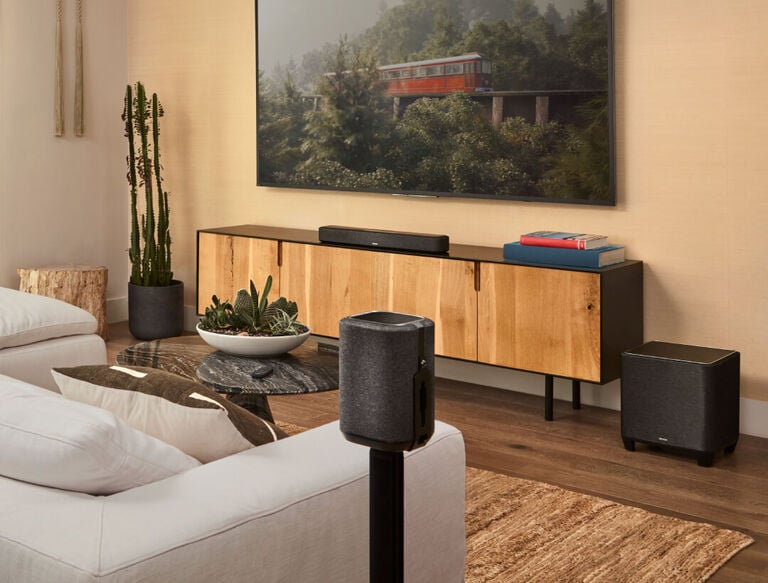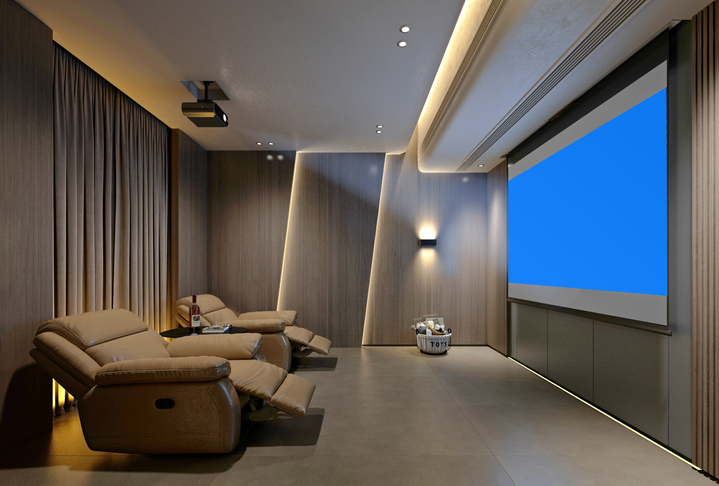Upgrade Your Living Space with Tampa Home Theater Installation
Upgrade Your Living Space with Tampa Home Theater Installation
Blog Article
Home Theater 101: Every Little Thing You Required to Know for a Cinematic Experience in your home
Developing a home cinema that rivals the cinematic experience of an industrial theatre includes careful consideration of numerous parts, including screen option, sound systems, and space format. Whether you are considering the optimal display size or the ins and outs of surround audio, recognizing these fundamentals is important.
Selecting the Right Screen
When establishing up a home theater, picking the appropriate screen can make or break the watching experience - tampa home theater. The screen works as the centerpiece of your arrangement, influencing photo quality, seeing angles, and total visual. Secret aspects to think about consist of screen kind, resolution, and size
Initially, identify the ideal screen size based on your space measurements and seating distance. Next, select in between numerous screen types, such as fixed-frame, mechanized, or retracting screens, each offering unique benefits.
Resolution is an additional critical aspect. For an absolutely immersive experience, consider a screen made for 4K or perhaps 8K material, ensuring intensity and clearness. Additionally, think about the screen's gain, which affects brightness and contrast; a higher gain can improve brightness in well-lit spaces, while a lower gain may be better for darker settings.
Picking Audio Equipment
Audio equipment is an essential component of any type of home cinema system, dramatically enhancing the overall viewing experience. The selection of audio equipment can determine the deepness, quality, and immersion of audio, crucial for creating a motion picture ambience.
When picking audio tools, take into consideration a border sound system, which usually includes a receiver, multiple speakers, and a speaker. A 5.1 or 7.1 channel system is recommended, where the first number stands for the audio speakers and the 2nd the subwoofer, providing an immersive soundscape. The receiver is the heart of the system, managing sound and video clip signals, and ought to support modern-day layouts like Dolby Atmos for an improved spatial experience.
Quality speakers are essential; search for designs that provide a balanced audio account with great bass response. Floor-standing audio speakers can create richer sound, while shelf choices save room. Furthermore, think about cordless choices for ease of installment, although wired systems commonly supply superior performance.

Ideal Seating Plans
Developing an excellent home cinema experience pivots dramatically on ideal seating plans. The arrangement of seats plays a crucial role in both convenience and checking out high quality, directly impacting the total motion picture experience.
First, think about the screen dimension and checking out distance. An usual standard is to position seats at a range around 1.5 to 2.5 times the diagonal dimension of the display. This guarantees an immersive experience without straining the eyes.
Following, elevation is essential. The back rows should be greater than the front to prevent obstructions if your seats is in a tiered style. For level seating, make certain that the front row is not also close to the display, which everyone has a clear view.
Additionally, consider the setup in regards to social characteristics. Team seating can boost the common experience, while specific seats may be chosen for individual viewing.

Finally, prioritize convenience with ergonomic seats that sustains extended watching periods. Including recliner chairs or cushioned seats can dramatically enhance the experience, making the home movie theater a preferred location for both entertainment and relaxation.
Lighting and Ambiance
Efficient lights and ambiance are vital parts of a well-designed home cinema, as they significantly influence the watching experience. The appropriate lights can improve the cinematic feeling, while inadequate choices can interfere with it. For ideal outcomes, consider a layered illumination method that consists of ambient, job, and accent lighting.
Ambient lighting gives general lighting, making certain that the space is not completely dark, which can strain the eyes. Dimmer buttons are very advised, allowing for changes based upon the content being viewed. Job lighting, such as over here wall sconces or floor lamps, provides useful illumination for activities like reading or navigating the space without interrupting the general ambience.
Accent illumination can be utilized to highlight architectural attributes or create prime focus, adding depth and passion to the room. LED strip lights behind displays or along shelves can provide a refined radiance that improves the visual experience without frustrating the visitor.

Wiring and Installation Tips
A well-planned electrical wiring configuration is critical for attaining ideal performance in your home movie theater system. Appropriate wiring not just makes certain high-grade sound and video signals yet additionally improves the general visual of your space. Begin by drawing up your design, identifying where each i was reading this component will certainly be put, including your screen, audio speakers, and receiver.
When selecting wires, focus on premium, appropriately evaluated electrical wiring to decrease signal loss. HDMI wires must be used for video links, while speaker cord must match the specifications of your speakers and amplifier. Select in-wall rated wires to follow security standards and keep a clean appearance.

Conclusion
In recap, creating an outstanding home theater experience needs cautious factor to consider of various aspects, including screen choice, audio equipment, seating plans, lights, and wiring. Each component plays a critical function in attaining optimal performance and setting, inevitably improving the satisfaction of home entertainment. By prioritizing these aspects, a cinematic atmosphere can be effectively reproduced, enabling immersive checking out experiences that measure up to traditional movie theater setups. Focus to detail in each area is necessary for total complete satisfaction.
Developing a home cinema that measures up to the motion picture experience of a business theater includes cautious consideration of several elements, including screen selection, sound systems, and area format.When establishing up a home movie theater, choosing the right screen can make or damage the checking out experience. Next off, choose between numerous display types, such as fixed-frame, motorized, or retracting displays, each offering unique advantages. For a truly immersive experience, take into consideration a display created for 4K or even 8K content, ensuring sharpness and quality.In summary, creating a remarkable home theater experience calls for mindful factor to consider of different aspects, consisting of display selection, audio tools, seating plans, lighting, and circuitry.
Report this page